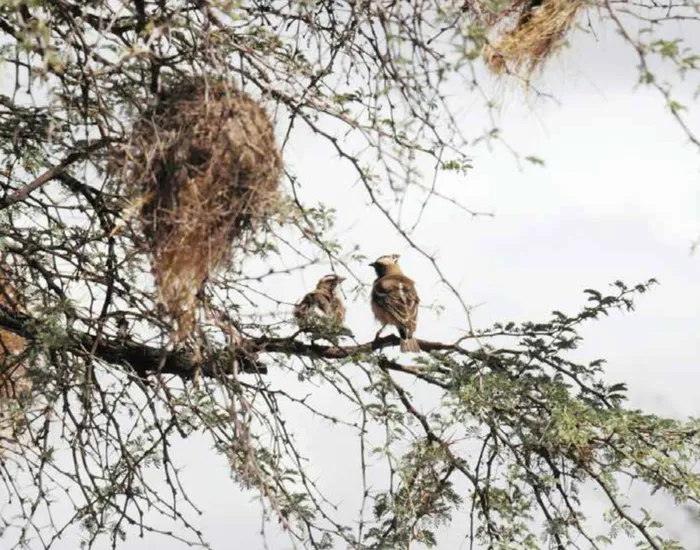Birds of a feather sing together

THE MOST beautiful duet you will hear anywhere in the world comes from Northern Cape birds singing in unison.
A small bird has discovered the secret to the perfect duet and its singing prowess could soon help in unravelling the mysteries of human behaviour.
The white-browed sparrow weaver is a common resident across most of South Africa. They are social birds that are known for their duets. But what has puzzled scientists is how a pair of these birds can sing precisely in turn and in tune.
Now researchers believe they know how they do it.
A team led by researchers from the Max Planck Institute for Ornithology, in Germany, travelled to the Northern Cape and used mobile transmitters to record the birds as they sang.
What they were able to find was that the nerve cell activity in the brain of the bird would change and synchronise when its partner began to sing. The scientists believe that the brains of the two birds essentially become as one and it is this that leads to the perfect duet.
The white-browed sparrow weaver is one of the few bird species that sing in duet. It was thought that some cognitive co-ordination was happening so that the individuals could synchronise their songs. But until now it wasn’t known what that exactly was.
To investigate these mechanisms the team travelled to the Kalahari desert, near Black Rock in the Northern Cape.
They attached small transmitters to the birds that recorded both audio and the brain activity.
Getting it all to work in the harsh conditions of the Kalahari in summer had its challenges.
But the recordings all worked well, even when the birds and their transmitters were caught in one of the few downpours.
Later the researchers recovered the transmitters without harming the birds.
Ornithologist Dr Dieter Oschadleus has spent much time studying weavers and said white-browed sparrow weavers are remarkable birds.
“The birds sleep in their nest all year round, which makes them a bit different from other weavers who will be at their nest while they are breeding,” said Oschadleus, who was not part of the study. The birds are so social they often share nests.
Within a colony a dominant pair will breed, while up to eight other birds in the group will help build nests and raise the young.
The researchers recorded almost 650 duets. Usually the male would start the song and the partner would join in shortly afterwards.
The co-ordination was so precise that it was found that there was only a 0.25 of a second delay between the duetting pairs.
And the little bird might just reveal something about humans too.
The researchers suspect that humans have similar mechanisms at work which could explain how dancers can effortlessly co-ordinate their movements with their partners and glide across a ballroom without a single word spoken. - Shaun Smillie